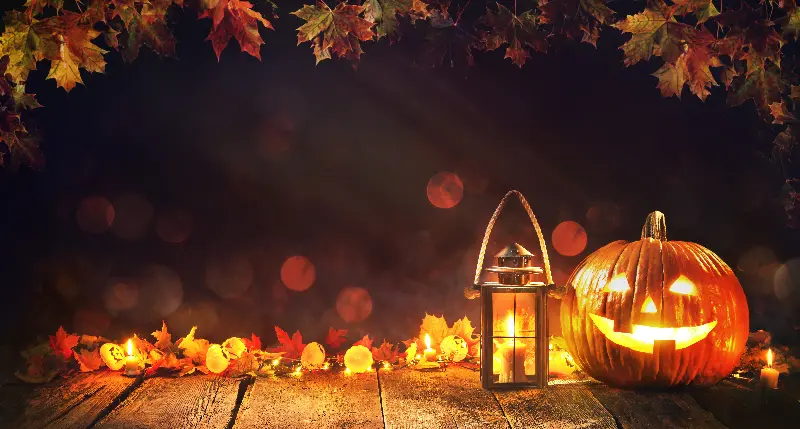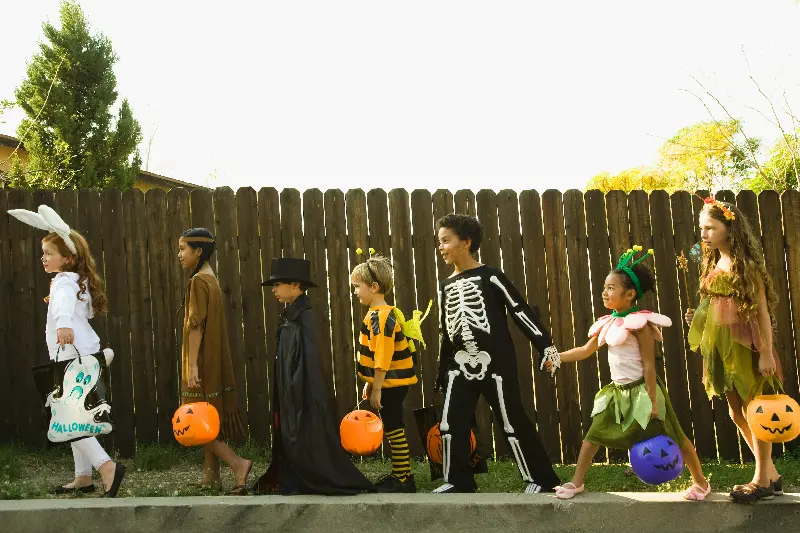Each autumn, as jack-o'-lanterns flicker and playful spirits haunt the streets, millions join together for one of the world’s most beloved and mysterious celebrations: Halloween. Beneath the costumes and candy, this global festival is rooted in ancient rituals and spiritual symbolism that has evolved through centuries and across continents. Let’s lift the mask on Halloween’s mystical origins and explore how its spiritual echoes continue to shape festivities today.

Celtic Beginnings: Samhain And The Thinning Veil
Long before Halloween became synonymous with trick-or-treating and haunted attractions, it was deeply embedded in the spiritual calendars of the ancient Celts. Around 2,000 years ago, in the regions now known as Ireland, northern France, and the UK, communities celebrated Samhain (pronounced “sow-in”), marking the end of the harvest and the onset of winter.
Samhain was considered the most liminal time of year—a sacred period when the boundaries between the physical world and the spirit realm grew thin. The Celts believed that during Samhain, spirits of the deceased and supernatural beings could cross over, visiting the world of the living. This wasn’t seen as entirely sinister; ancestors were honored, invited to join feasts, and offered food as a sign of respect. Yet, not all spirits were benign. To ward off malevolent beings and avoid mischievous fae, Celts would don animal skins and masks, a tradition that later influenced costume-wearing on Halloween night.
From Pagan To Christian: The Shaping Of All Hallows’ Eve
As Christianity began to spread across Europe, new traditions layered themselves over pagan customs. In the eighth century, Pope Gregory III designated November 1st as All Saints’ Day—a time to honor saints and martyrs. The night before became known as All Hallows’ Eve, which gradually transformed linguistically into “Halloween.”
Despite the shift toward Christian observances, many Samhain traditions endured, subtly blending the sacred with the secular. Bonfires, which were believed to repel evil and purify communities, continued to burn. Parades and gatherings served a dual purpose: celebration and protection from wandering spirits. It was this dynamic intersection of worlds—old and new, spiritual and mortal—that made Halloween a festival uniquely mystical.

The Power Of Symbolism: Ghosts, Pumpkins, And The Quest For Light
So much of Halloween’s enduring magic lies in its rich tapestry of symbols—the stories and meanings they carry from generation to generation. Ghosts and skeletons remain front-and-center, echoing ancient beliefs about the returning dead and the cyclical nature of life and death. In some cultures, these spirits are not to be feared but revered, as keepers of wisdom and memory.
The jack-o’-lantern is perhaps the festival’s most iconic image. Its roots can be traced to Irish folklore and the legend of Stingy Jack, a clever trickster doomed to wander the Earth with only a carved turnip to light his way. When Irish immigrants arrived in America, they found pumpkins more plentiful and easier to carve. So began the tradition of glowing gourds on porches, their flickering faces meant to ward off unwelcome spirits or mischievous visitors.
Even sweet treats bear spiritual significance. “Soul cakes” were once baked and exchanged on All Souls’ Day for prayers for deceased loved ones, a custom believed to offer comfort or assistance in the afterlife. Modern trick-or-treating finds its roots in this practice, blending spirituality with community fun.
Halloween Across The Globe: Diversity In Celebration
While the Halloween most familiar in the English-speaking world is a vibrant fusion of Celtic, Christian, and modern influences, similar festivals abound across cultures—each with its own spiritual undertones. In Mexico, Día de los Muertos (Day of the Dead) joyously celebrates ancestors, decorating altars with marigolds and sugar skulls. In Italy, Ognissanti involves visiting cemeteries with flowers and candles to remember loved ones.
In Hong Kong, the Hungry Ghost Festival is rooted in Buddhist and Taoist traditions, when restless spirits are believed to roam the earth. Families prepare offerings of food and burn incense to safeguard themselves and appease wandering souls. Although the modes of celebration vary, the underlying theme is universal: bridging the realms of the living and the spirit.
Modern Meaning: Connection, Community, And The Spirit Within
Today, Halloween is cherished not just for its spooks and sweets, but also as a time of connection—across generations, communities, and beliefs. Underneath the playfulness lies a deeper yearning to honor what we cannot see and to embrace the mysteries of existence. Whether donning costumes, lighting a candle for loved ones, or gathering with friends, participants tap into the age-old recognition that our world is rich with wonder and spirit.
In many ways, Halloween’s enduring appeal is its ability to weave together joy and solemnity, memory and mischief, the seen and the unseen. It invites us all—men and women, young and old—to celebrate the cycles of life, the stories of our ancestors, and the thrill of a night when the ordinary world feels just a little more magical.
So, the next time you carve a pumpkin or step into the night in disguise, remember: you’re partaking in a tradition far older and richer than you might ever have imagined—a global, spiritual tapestry that continues to enchant and unite us all.
